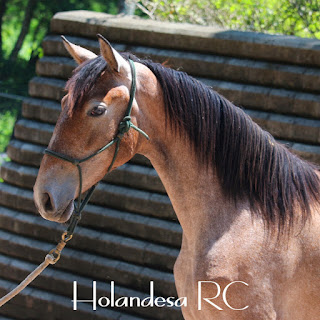Good morning! You may now subscribe to my blog” Preparing Foals for Life “.
We will be covering the learning process of my 7 yearlings using the Parelli method.
Enjoy your day!
Hi
This last March my friends Carlos and Anahi were visiting from Peru.
Usually this weekly Course that I teach includes daily lessons and the students accompany me throughout the day observing and taking part in my different activities.
In the afternoons I try to spend a good amount of time working with the foals and yearlings: the babies as I call them! After a few days Carlos and Anahi started helping me with them and suggested I document our activities with the babies. So thanks to them this blog was born!
You are invited to join me throughout the development of this process with my 7 yearlings.
At this age they are ready to learn new things and there is no time to waste!
We are going to include the learning of skills in their daily routine which will transform them into safe and easy horses to handle, horses with good manners and a positive response to the pressure we apply during their daily handling and their in dealing with their health care.
Week by week I will be describing how this process is going and the different reactions of each yearling. This excites me very much as we will learn how to treat each individual yearling depending on their horsenality. The objective is: calm horses that (who) trust us which helps them interact in the human environment for the rest of their lives.
First I want to introduce them to you:
Only Hendrix and Hechicera did not have the imprinting process done as they were not born on the same farm. The weaning process was done in a progressive manner to avoid the trauma caused by abrupt weaning. They live in a paddock in the morning where they play and eat together ,developing friendships and skills which will determine the hierarchy in the herd.
They have been handled since very young foals so they are used to being haltered and led to and from the paddock to the stalls. In the afternoons they return to their stalls where we interact with them on a daily basis; their hoofs get picked out daily and we play the first 3 Parelli games( Friendly, Porcupine and Driving)
This is where the adventure begins!
My purpose is to teach them this series of skills and most likely others will come up during the process!
1.-Handling as to how to be led appropriately and how to enter the stall safely and respectfully.
2.- Learn to be tied and calm anywhere.
3.- To be ready for the shoer
4.- The acceptance of the spray bottle ( fly spray)
5.- Introduction of riding equipment: saddle pad, girth, saddle
6.- Injections ! How to trust which leads to them being still during an injection or taking of blood sample
7.-How to stand on the pedestal which is a preparation for loading
8.- Loading
Will you join me??
I will be updating the Blog weekly and keeping you posted on how the process is going!
See you!
Ale









Comments
Post a Comment